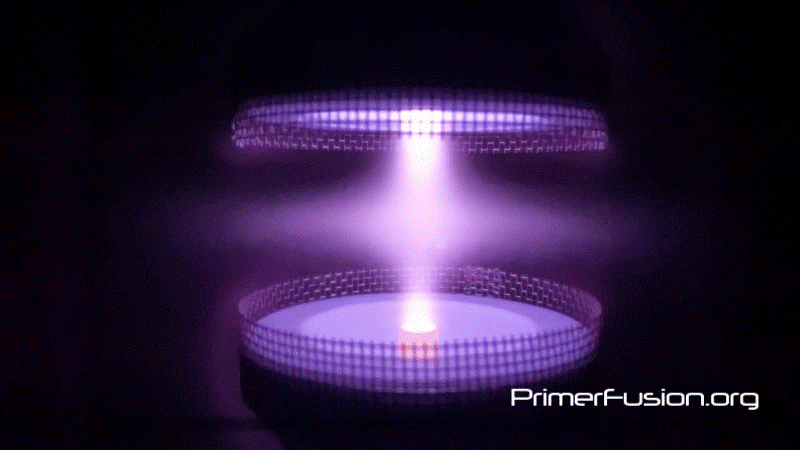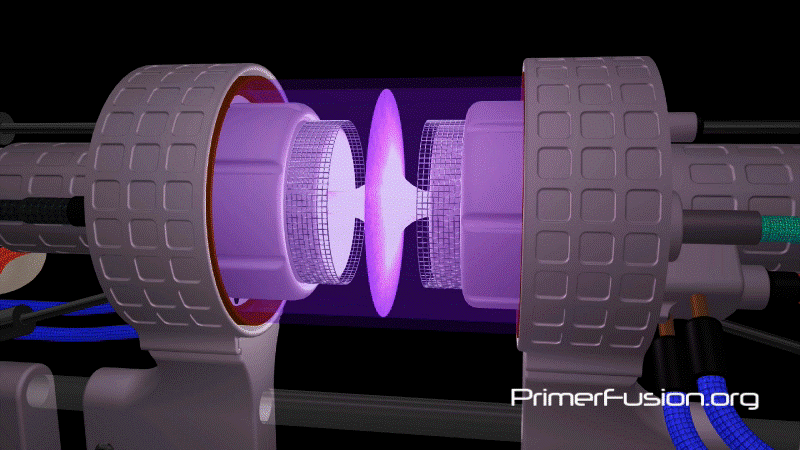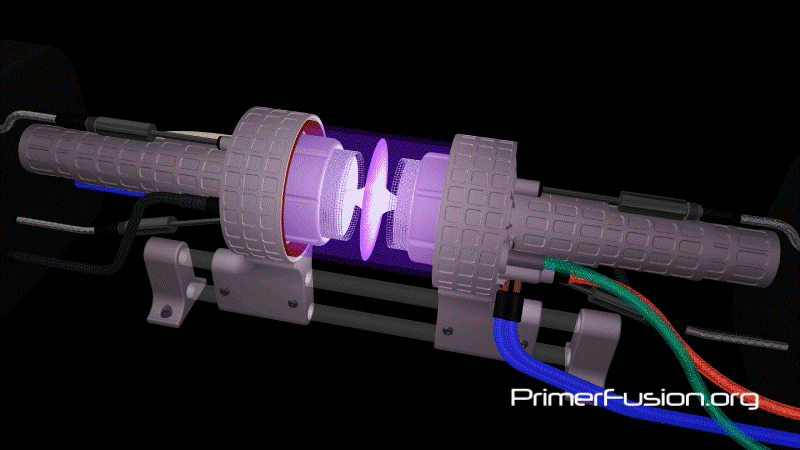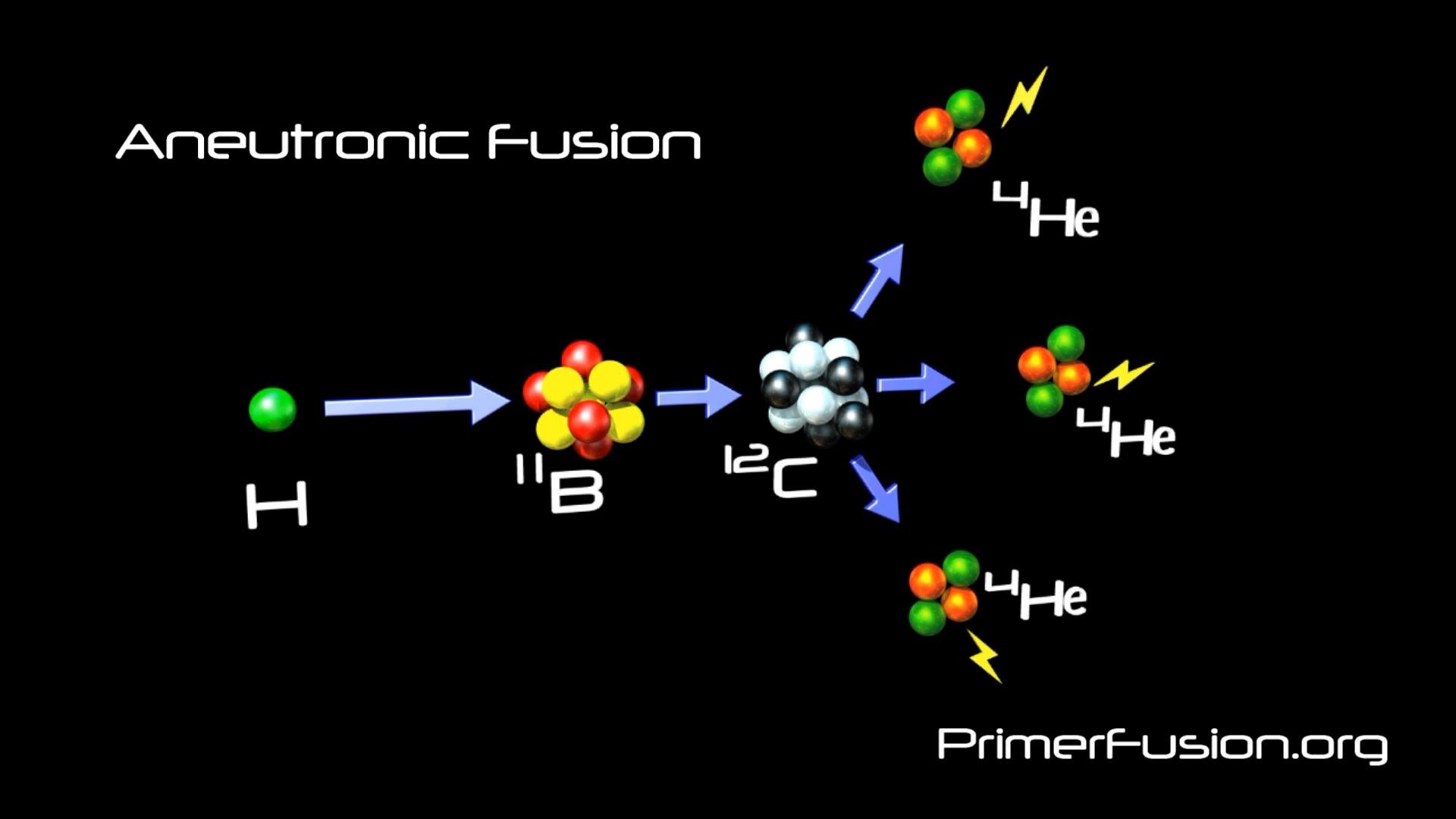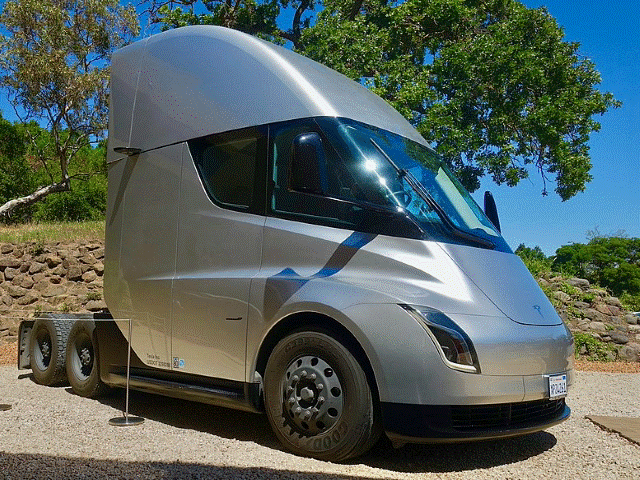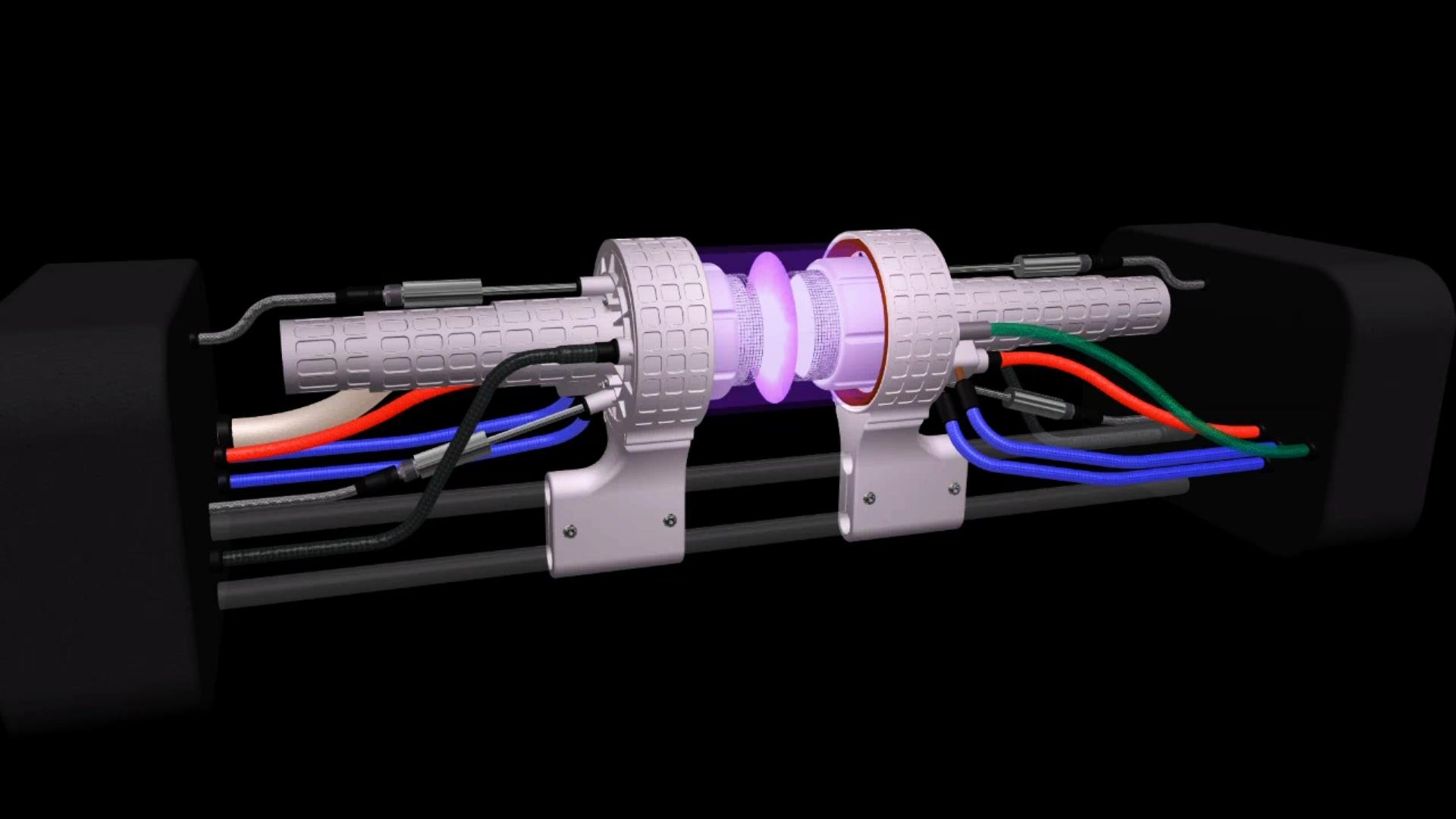
A Brighter Future is Ahead
PrimerFusion is a revolutionary approach to producing safe carbon-free energy.

Video of a PrimerFusion Hydrogen Boron Plasma Experiment
Although still in the experimental stage, the PrimerFusion approach to controlled fusion has already produced very encouraging results in our plasma fusion experiments over the past three years. Using all we learned from these prior fusion experiments, we designed a new PrimerFusion reactor that is showing great promise in early testing.
The PrimerFusion Reactor
Our new PrimerFusion reactor utilizes high-temperature ceramic components and a mineral oil cooling system in critical areas. Plus, we have increased the reactor's magnetic flux density with higher-strength neodymium magnets in the bowl-shaped magnetic arrays. These improvements will allow us to operate this new PrimerFusion reactor at much higher energy levels, temperatures, and plasma densities than in our previous experiments.
We have also completely redesigned our new reactor's high-voltage power supplies to provide up to ten times the energy we used in our previous fusion experiments. In addition, we have engineered a programmable system to provide automatic control of these high-voltage power supplies. This system will precisely control and monitor the frequencies, voltage levels, current, polarity, and phase synchronization of the electricity flowing through the Hydrogen Boron plasma in the PrimerFusion reactor.
Our new control system also controls the Hydrogen and Boron feed rates, the reactor vacuum levels, and the cooling systems used in the reactor. This new control system also captures and logs all critical data on the reactor to enable the analysis of our process data in the most efficient manner possible.
Advantages of PrimerFusion
No Carbon Emissions
Low Energy Cost
Abundant Fuel Supply
Simple and Compact Design
Portable Energy Source for Transportation
No Hazardous Radiation or Neutron Emissions
No Carbon Emissions
Scientists worldwide consider climate change to be the number one threat to the future of our planet. However, a lot of the opposition to ending our reliance on fossil fuels is because clean energy is more expensive than carbon-emitting energy sources. With energy prices already at all-time highs, many people simply cannot afford to pay more for their energy. Therefore, if we are going to stop climate change, we need more than just more protests and endless speeches. We need a technology breakthrough to provide carbon-free energy at a lower cost than fossil fuels. We believe we have found that much-needed breakthrough in inexpensive carbon-free PrimerFusion.
Low Energy Cost
With energy costs skyrocketing like never before, there has never been a more urgent need for a new low-cost energy source. PrimerFusion will be able to supply the typical home's energy needs for less than ten dollars per month. Therefore even if you don't believe in climate change, PrimerFusion will still be important to you as it will dramatically reduce your energy costs. Because of the low energy cost, people will switch to carbon-free PrimerFusion just for the money they will save and thereby reduce their carbon footprint at the same time. With PrimerFusion, we will be able to reduce our energy costs and fight climate change at the same time.
Abundant Fuel Sources
PrimerFusion uses Hydrogen and Boron in the fusion process. Fortunately, the Earth has enough Boron to provide our planet's energy needs for the next million years through Hydrogen Boron fusion. Plus, we can generate all the Hydrogen required for PrimerFusion from water or even seawater through simple techniques such as electrolysis. Therefore as long as we have water, we will be able to produce all the Hydrogen needed to create electricity with PrimerFusion.
A Simple Energy Conversion Process
PrimerFusion will use Boron and Hydrogen fusion to produce energy very efficiently. When Boron and Hydrogen fuse, the primary product is highly charged helium-4 alpha particles. When these highly charged particles collide with a collector, the charges are extracted and converted into usable electricity via a transformer that contains no moving parts. Therefore the need for a complicated system that uses heat to produce steam to drive a turbine to drive a generator is eliminated with PrimerFusion.
PrimerFusion is Safe
PrimerFusion emits no harmful radiation or neutrons, as does deuterium-based fusion. Deuterium fusion emits neutrons that damage reactor components and cause them to become radioactive. Neutrons are also hazardous to people and animals, but we will avoid this neutron issue right from the start since PrimerFusion produces no neutrons. All PrimerFusion will create is electricity and a byproduct of harmless helium.
Perfect for Transportation
The design of the PrimerFusion reactor is simple, inexpensive, compact, and portable. These features will make it perfect for use in the transportation sector. For example, an onboard PrimerFusion reactor would continuously charge the battery in an electric automobile even while you were driving. A fusion-electric hybrid system would give you a vehicle that could travel over ten thousand miles between refueling and emit no carbon emissions. As you probably know, fuel costs are a large part of food or other products you buy. Therefore, using PrimerFusion in large electric trucks, trains and cargo ships will lower the cost of transportation and, consequently, the cost of living in many ways beyond your electric bill or other fuel expenses.
No High-Voltage Power lines
Since PrimerFusion will generate electricity where it is needed instead of at large power plants far away, this also means that we would no longer need high-voltage power lines crossing the countryside. Eliminating these power lines would significantly reduce the threat of power line-caused forest fires like the Camp Fire in California in 2018. The Camp Fire was the deadliest and most destructive wildfire in California's history as it led to 85 deaths and destroyed 18,808 buildings as the fire burned 240 square miles of land.

